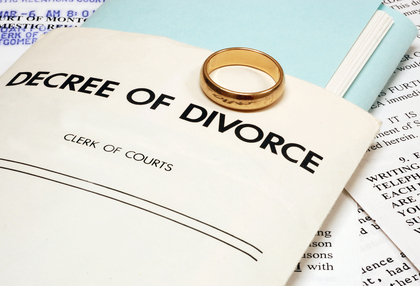“What do we live for, if it is not to make life less difficult for each other?” – George Eliot
 Some people think that having a “good divorce” is an oxymoron. In her October 28th NY Times article entitled “The Good Divorce”, Susan Gregory Thomas admits that “. . . there is precious little upside to divorce. “ She goes on to talk about how she and her husband were able to focus on their children rather than focusing on their pain, hostility and feelings of betrayal as they were going through the process.
Some people think that having a “good divorce” is an oxymoron. In her October 28th NY Times article entitled “The Good Divorce”, Susan Gregory Thomas admits that “. . . there is precious little upside to divorce. “ She goes on to talk about how she and her husband were able to focus on their children rather than focusing on their pain, hostility and feelings of betrayal as they were going through the process.According to statistical studies, people are marrying a little later in life, and tend to live together for a certain period of time before they decide to officially tie the knot. Couples who live together before they marry are often able to successfully overcome the obstacles inherent in the initial period of cohabitation between two strangers. If they become friends, their marriage generally strengthens. Sometimes, however, even these marriages don’t work out, but when they fail, they fail “differently”. Couples that have been good friends during their marriage tend to approach their separation and divorce very differently than those who married in the midst of their passion, and had a heated marriage followed by a very heated divorce.
Susan Thomas says that based on Generation X research (people born between 1965 and 1980) conducted by Betsy Stevenson, an assistant professor at the Wharton School of Business, nearly 60% lived with their future spouses before marrying. Of that group, about 80% have made it past 10 years of marriage which is a very positive statistic.
Of those marriages that did not work out, the couple’s approaches to a divorce differ greatly. Among them, divorce mediation and collaborative divorce are on the rise, as parents want to spare their children the horrors of the types of divorces that they remember in movies like Kramer vs. Kramer or that they recall from their childhood. These couples read the studies; they understand the effect of divorce on children:
- Children of divorce are worse in math and social skills.
- They suffer from lower self-esteem than those from non-divorced households.
- Girls struggle with low self-esteem if their father abandoned them or if there is little exposure to the father in real life.
They prepare for the divorce the same way as they prepare for anything else in their lives. Their diligence enables them to approach the divorce process as a problem to be solved rather than an injury to be healed or inflicted on the other side. They are able to focus on the children’s well being and on common-sense solutions to financial problems rather than just dealing with the whole issue emotionally.
Susan Thomas talks about her particular situation and how she and her husband actually ended up strengthening their core friendship as they went through the divorce and discussed things together. They focused on the children and although as a couple, it didn’t work out, they continued being good friends for years to come. So she poses the question: “Do those marriages that suffer from a lack of heat while intact generally produce better divorced parents?”
The clients that cross the threshold of my office seem to confirm Thomas’ viewpoint. Generation X couples are more likely to mediate or be involved in a collaborative divorce process than younger couples or those, who, having lived together for 25 years are now going through a very hostile divorce. With younger couples the sense of betrayal often overwhelms and actually impedes the ability to make decisions during a divorce. Among older families, where children are emancipated, there is often long term resentment mixed in with concerns about financial stability later in life. How will the divorce landscape change in the future? I believe, that much of it will depend on what cultural direction our society would choose to undertake in the next few years.







